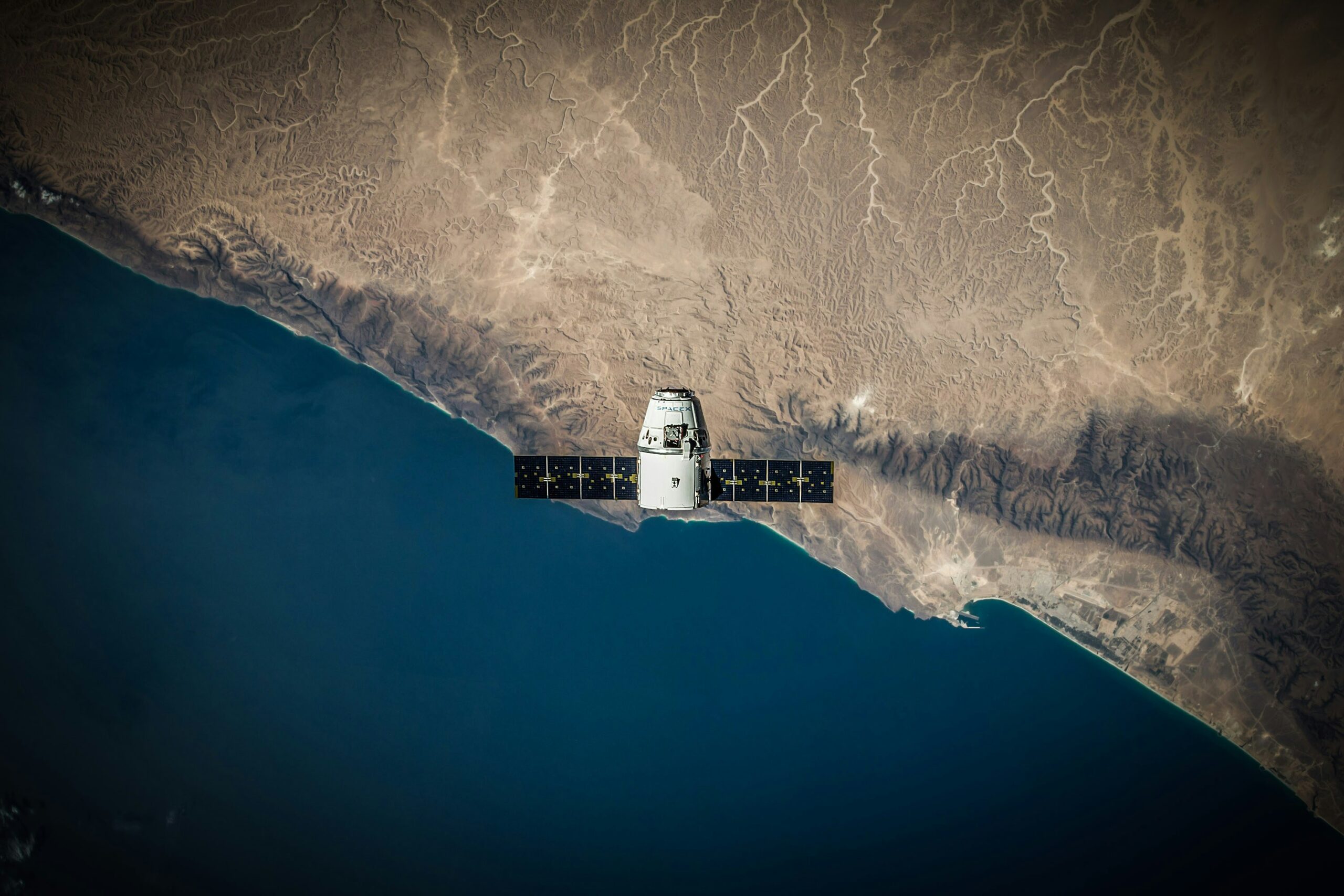The year 2024 is set to be a groundbreaking period for space exploration, as technologies continue to evolve, pushing the boundaries of what is possible in this exciting field. From advanced spacecraft designs to cutting-edge data analytics and artificial intelligence, space missions are becoming more efficient, safer, and ambitious. These innovations are not only influencing scientific discoveries but also creating new opportunities for businesses to invest in space-related ventures. In this article, we will explore the top technologies shaping space exploration in 2024, with a focus on how these advancements intersect with business intelligence (BI) to drive space missions forward.
1. Artificial Intelligence in Space Missions
One of the most impactful technologies shaping space exploration is artificial intelligence (AI). AI is revolutionizing how space agencies conduct missions by enabling autonomous decision-making systems in spacecraft. AI can analyze vast amounts of data in real-time, allowing space missions to respond to unexpected situations quickly. This technology plays a crucial role in improving mission efficiency and reducing reliance on ground-based control centers.
For example, AI-driven spacecraft can navigate through space autonomously, avoiding potential hazards like space debris. This self-sufficiency is vital for long-duration missions, such as those to Mars or other distant celestial bodies. Moreover, AI’s predictive capabilities can help scientists identify potential problems before they occur, enhancing safety during missions.
From a business intelligence perspective, AI provides valuable insights into space exploration. Data generated from AI systems during space missions can be analyzed to optimize future missions, reducing costs and increasing the success rate of space exploration projects. Companies invested in space technologies can leverage AI-driven business intelligence tools to make data-driven decisions, improving their competitive edge in the space industry.
2. Advanced Propulsion Systems
In 2024, the development of advanced propulsion systems is expected to significantly enhance space travel capabilities. Traditional chemical propulsion systems are being replaced by more efficient technologies like ion thrusters and nuclear propulsion. These systems allow spacecraft to travel longer distances at higher speeds while consuming less fuel.
Ion propulsion, for example, uses electrically charged particles to create thrust. This technology is already being tested in space missions, and its potential for deep-space exploration is immense. Nuclear propulsion, on the other hand, could enable missions to Mars in a fraction of the time required by traditional propulsion systems.
As space travel becomes faster and more efficient, companies involved in space tourism, satellite deployment, and resource exploration will benefit from these advancements. Business intelligence technologies will play a critical role in analyzing propulsion data to optimize future missions and reduce operational costs.
3. 3D Printing in Space
The use of 3D printing technologies is revolutionizing how space missions are conducted. In 2024, astronauts will be able to print essential components, tools, and even habitats directly in space. This capability reduces the need for spacecraft to carry large inventories of supplies, making missions lighter and more cost-effective.
One of the most exciting applications of 3D printing in space is the potential to build structures on the Moon or Mars using local materials. Instead of transporting building materials from Earth, 3D printers could use lunar or Martian soil to create habitats for astronauts. This technology is crucial for long-term space exploration, as it enables the construction of sustainable outposts on other planets.
From a business intelligence perspective, companies involved in space exploration can use data from 3D printing operations to improve manufacturing processes, reduce costs, and increase the efficiency of space missions. Analyzing production data through business intelligence tools allows for real-time adjustments and optimization, ensuring that space missions run smoothly.
4. Quantum Computing and Space Exploration
Quantum computing is one of the most promising technologies shaping space exploration in 2024. Unlike classical computers, which use bits to process information, quantum computers use qubits, allowing them to perform complex calculations at unprecedented speeds. This technology has the potential to revolutionize space exploration by solving problems that are currently too complex for classical computers.
For instance, quantum computers could simulate spacecraft trajectories more accurately, optimize fuel consumption, and improve communication systems. This capability is essential for missions to distant planets or moons, where precise calculations are critical for mission success.
Moreover, quantum computing can enhance business intelligence efforts in space exploration by processing and analyzing massive datasets generated during space missions. By applying quantum algorithms to space data, companies can uncover hidden patterns and insights, enabling them to make more informed decisions about their space ventures.
5. Robotic Exploration and Autonomous Systems
Robotics continues to play a significant role in space exploration. In 2024, robotic technologies will become even more sophisticated, enabling the exploration of distant planets and moons without human intervention. Robots like rovers and drones are essential for conducting scientific experiments, collecting samples, and mapping the surfaces of celestial bodies.
One of the key advancements in robotic technologies shaping space exploration is the development of autonomous systems. These robots can operate independently, making decisions based on the data they collect. Autonomous rovers, for example, can navigate the surface of Mars without needing constant instructions from Earth, significantly reducing the communication delay.
Robotic systems are also crucial for space mining operations. Companies looking to extract valuable resources from asteroids or the Moon can deploy robotic miners to conduct operations in extreme environments. By integrating business intelligence tools with robotic systems, companies can analyze operational data, monitor performance, and optimize resource extraction processes.
6. Satellite Mega-Constellations
Satellite mega-constellations are transforming how we communicate, observe, and navigate in space. These networks of thousands of small satellites provide global coverage for internet connectivity, Earth observation, and GPS services. In 2024, the deployment of mega-constellations will continue to expand, offering new opportunities for space-based businesses.
These technologies shaping space exploration are essential for real-time data collection and transmission. Satellites equipped with advanced sensors can gather information about Earth’s climate, natural disasters, and even track space debris. This data is invaluable for scientific research and commercial applications.
For companies involved in satellite deployment and management, business intelligence technologies play a vital role in analyzing satellite data to improve service quality, monitor satellite health, and optimize network performance. By leveraging business intelligence tools, businesses can gain actionable insights that enhance their operations and increase profitability.
Conclusion
In 2024, the technologies shaping space exploration are more advanced than ever before. From artificial intelligence and quantum computing to 3D printing and autonomous robotics, these innovations are pushing the boundaries of what is possible in space. As space exploration becomes more data-driven, the integration of business intelligence technologies will be crucial for optimizing operations, reducing costs, and ensuring mission success.
As we look to the future, it is clear that space exploration is not just about scientific discovery—it is also a thriving industry with immense commercial potential. By staying at the forefront of these technologies shaping space exploration, businesses can position themselves to capitalize on the exciting opportunities that lie beyond our planet.
FAQs
1. How does AI influence space exploration in 2024?
AI enhances autonomous decision-making, improves mission efficiency, and helps spacecraft navigate space independently, reducing the need for human intervention.
2. What are the benefits of 3D printing in space?
3D printing allows astronauts to produce tools and structures directly in space, reducing the need for large inventories and enabling sustainable construction on other planets.
3. How does quantum computing improve space missions?
Quantum computing performs complex calculations faster than classical computers, optimizing trajectories, fuel consumption, and communication systems during space missions.
4. Why are satellite mega-constellations important?
Satellite mega-constellations provide global coverage for communication, Earth observation, and GPS services, offering real-time data collection and transmission.
5. How is business intelligence used in space exploration?
Business intelligence analyzes data from space missions to optimize operations, reduce costs, and improve decision-making in space-related businesses.




